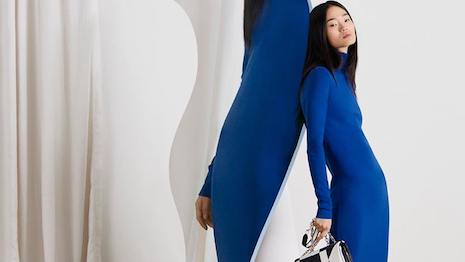- About
- Subscribe Now
- New York,
November 30, 2018

 Calvin Klein is one of the brands FFIs commonly own. Image credit: Calvin Klein
Calvin Klein is one of the brands FFIs commonly own. Image credit: Calvin Klein
Tiffany, Louis Vuitton and Gucci are succeeding with millennial forward-facing immigrants, as new research finds this consumer segment seeks quality and prestige in their luxury goods.
A report from MVI Marketing notes that Asian Americans and Hispanic consumers want to feel valued by retailers, looking for brands to provide services such as personal styling and after sales support. To reach these sophisticated, selective shoppers, luxury brands can appeal to their desire for status.
"This is a growth demographic for luxury brands and it's global," said Marty Hurwitz, CEO of MVI Marketing, Austin, TX. "Not only are they driving growth in the U.S. market, they are also driving growth wherever they travel.
"Luxury travel in the FFI segment is significant and propels luxury brand retail spending," he said. "Additionally the FFI segment has family and friend relationships throughout the world. They can become — and in some cases already are — brand advocates/ambassadors with their family and friends."
MVI Marketing’s Millennial Consumer Research: Forward Facing Immigrant Luxury Consumers report is based on a survey of 702 United States consumers between the ages of 25 and 40 with household incomes of at least $80,000. Forty-three percent self-identified as Asian Americans, while 57 percent are Hispanic.
FFI favorites
MVI found that about a third of forward-facing immigrants (FFIs) are apt to buy a name brand over a generic, while 56 percent are at least somewhat likely to go with branded merchandise.
European luxury labels are the most popular among this audience, with more than half saying they go for products made in markets such as France and Italy. U.S.-made luxury comes in second with 29 percent saying they most often pick American brands.
The number one luxury purchase driver for FFIs is affordability. This is followed by wanting to stand out and feeling a sense of loyalty.
Tiffany is a popular brand among FFIs. Image credit: Tiffany
Nine in 10 of these shoppers research luxury goods before buying, turning to resources such as reviews on Amazon or Google as well as input from their social circle and social media. A significant population says they refer to a brand’s Web site before buying.
Online channels also play a role in buying, but primarily for experiential categories. While it is common for these shoppers to book travel on their mobile devices, hard luxury goods and fashion are still aided by the in-store experience.
At retail, luxury stores can make an impression with services such as private shopping rooms. Hispanic consumers also say they appreciate having sales associates who speak Spanish.
In terms of product categories, consumers are most apt to be in the market for handbags, apparel and jewelry.
While FFIs tend to own fashion from labels such as Coach, Adidas, Calvin Klein and Michael Kors, they say they would most like to receive brands including Louis Vuitton, Gucci and Chanel as gifts.
In jewelry, there is more correlation between ownership and gifting preferences, with Tiffany topping both rankings, followed by brands such as Gucci and Swarovski. However, while millennials FFIs do not commonly own Cartier pieces, the brand is the second most favored for gifting.
Cartier is a top desired brand for FFIs. Image credit: Cartier
In watches, Apple far outweighs the competition, with about 38 percent owning an Apple Watch.
"Tiffany in particular has become very imaginative in transforming an iconic brand, with a rich history, into an appealing modern brand for younger affluent FFI consumers," Mr. Hurwitz said. "The new Tiffany is targeting a younger self-purchasing female like never before.
"They are a breath of fresh air in the luury brand market," he said. "The new leadership understands the need to focus on the new generation and the new growth segments like FFI consumers."
Multicultural mindset
Perceptions of luxury are shifting as more multicultural and millennial consumers become clients of high-end goods and services, forcing brands to evolve their marketing strategies.
Luxury often leans on quality and exclusivity to justify its price points, but a report from Mindshare finds that big-name brands are losing favor due to a seeming decline in both production methods and personal touch. To maintain relevance, luxury marketers need to think small and focus on the new influences and mindsets behind consumer purchases (see story).
Despite the rise of ecommerce, the bricks-and-mortar retail experience remains a key factor in consumers’ purchase decisions.
According to a report from Astound Commerce, 59 percent of consumers consider a brand’s in-store experience before shopping with that retailer, while 78 percent agree that a positive interaction with a sales associate can convince them to buy. Finding ways to fuse the physical and the digital will be key for retailers going forward, as millennials are more likely than the average consumer to take advantage of cross-channel services (see story).
"The first challenge is acceptance," Mr. Hurwitz said. "Are brands even aware how powerful the FFI demographic is? What do they know about them, and what do FFI consumers think about their brand vs. their competitors?
"Is the current product offering in tune with this demographic? Is the current marketing reaching them?" he said. "So a first step is benchmark research with this consumer segment to evaluate the value drivers related to the brand and the consumer.
"Following the benchmark research, brands should evaluate new product development that targets the FFI consumer and evolve a marketing strategy that can communicate with this consumer."
Share your thoughts. Click here